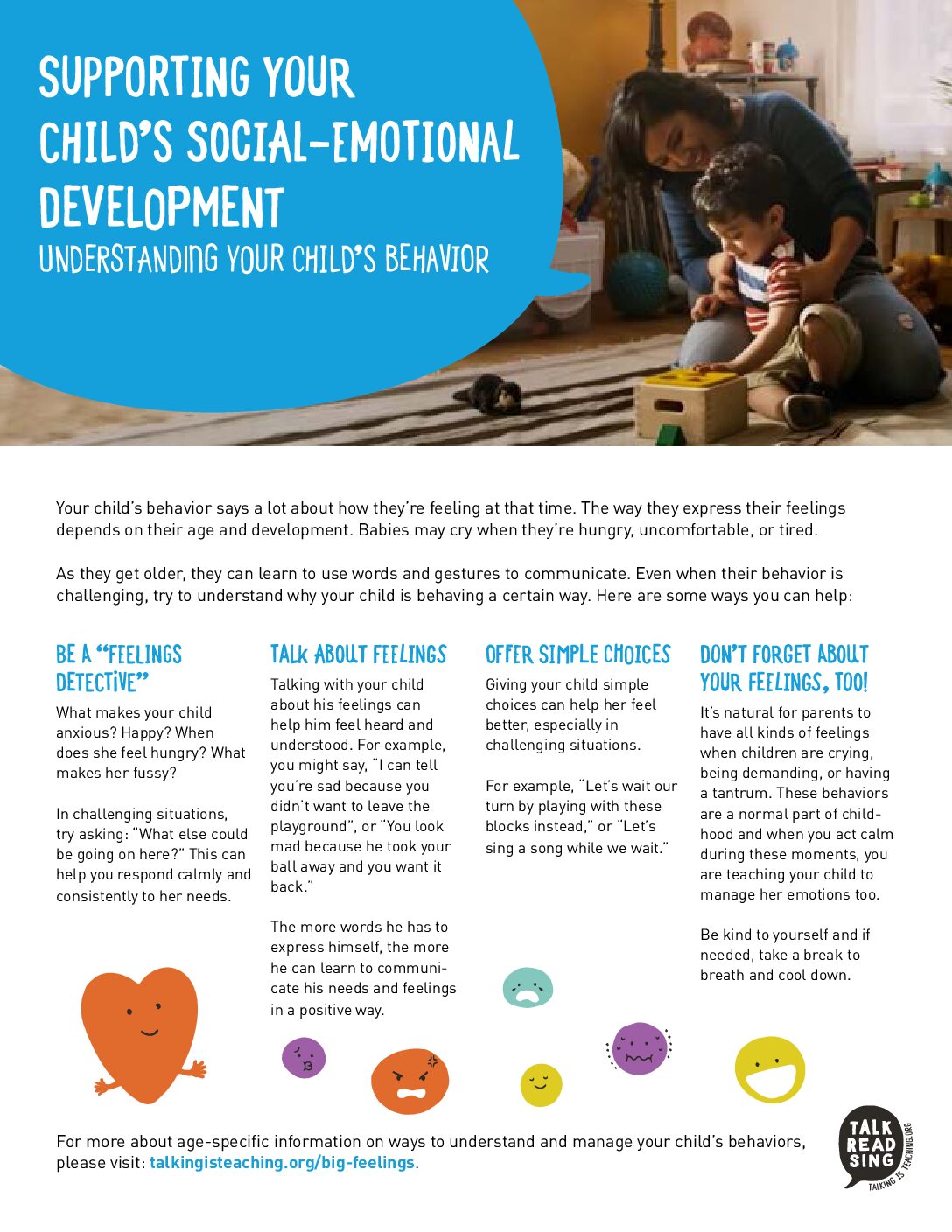Supporting Your Child’s Social-Emotional Development

Challenging behaviors in young children often stem from underlying emotions, and when parents can recognize these feelings, it helps build a stronger bond with their child. Understanding what drives behaviors, like tantrums or crying, enables parents to respond more calmly and supportively. By observing their child’s development, parents can become “feelings detectives,” learning patterns and emotions to improve communication. Teaching young children about their feelings and offering choices helps them express themselves better, building social-emotional skills for life. It’s also important for parents to be patient with themselves, acknowledge their feelings, and take breaks when needed to model emotional regulation for their child.
Want to learn more about the feelings behind your child’s behaviors? Check out our video “Small Children Have Big Feelings.”